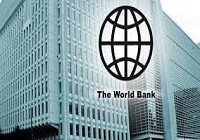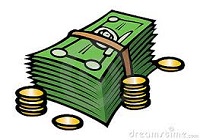World Bank- Keeping the world together and how the Developing Countries are benefitting
The World Bank is a bank as the name suggests but it’s not a bank in common. It’s not a bank where a person may end up with an account in it. Rather, in a way countries get hold of account in this bank. It is logically feasible to understand that a national Bank won’t be able to loan the nation as the need for the nation is way too much and the country bank’s don’t really get that much turnover so that they may lend the money as the economy is already suffering crisis. And so the World Bank comes to the rescue at this very point. It is an international bank which generally deals with assisting the developing countries, financially and technically. It focuses mainly on broadening and straightening the economies which are the part of their group. It issues loans and funds to these countries with the aim of development and reducing poverty in these countries. The World Bank has around 188 member countries and is not owned by any country rather they work mutually to help each one.
International Development Association (IDA) and International Bank for Reconstruction and Development (IBRD) are the two constituent parts of the World Bank
From the above two IBRD lends money or funds to the government which they find are capable of returning or repay the loan with the interests. Whereas the other constituent does the same but lends to the countries that maybe incapacitated to do so.
So now coming to the question how the World Bank did come into existence. On July 1, 1944 at the U.N. Monetary and Financial Conference at Bretton Woods, New Hampshire, it was decided to bring an autonomous institution to help the countries financially and so the World Bank came to Life. The World Bank along with some more associates are referred to as the World Bank group. These are
- TheInternational Finance Corporation (IFC) which was founded in 1956. The FIC is responsible to finance private sector in the developing countries.
- TheMultilateral Investment Guarantee Agency (MIGA) which was founded in 1988. This is responsible to provide guarantees to investors in developing countries against risks.
- TheInternational Center for Settlement of Investment Disputes (ICSID) which was founded in 1966. This provides facilities for settlement of disputes related to investment.
The draftsmen of the World Bank were Harry Dexter White and John Maynard Keynes.
Now coming to the most probable question which must have been revolving in your head – From where does the World Bank get such huge amount of money that it loans to nations for the prosperity of that nation?
The World Bank has various ways to get or raise money so that it can help the nations financially. The World Bank is funded by donations which are donated by wealthy nations like US, UK etc. also besides this donation the huge amount of credit which nation repay is also another way of funds for the World Bank. The loans lent by the IBRD to the developing nations are backed with AAA rated bonds in the financial market of the world. Also the capital reserves built up from the member nation’s money paid constitute to the huge amount of stocks. This income is so huge that it pays for the World Bank expenses and funds IDA. The AAA bond status is maintained by preserving severe financial discipline so as the Bank continues to extend its financing. The IMF finances for immediate emergencies i.e. for generally short period of time whereas the World Bank finances on a long term basis. Also the World Bank is stocked up from the private money investments with the help of government backing of that nation. The Bank then switches and starts lending the very same money that entered into their account to the nations in need so as for development. This is done at very low rates as the nation is already in need and asking them for high interest isn’t feasible. It must be noted that the World Bank revises their interest rates twice every year with once in six months. Also the rates are just 0.5% above the rate on which they borrow the amount. The World Bank terms the loan amount with the conditions so as the country’s economy is able to repay the loan after sometime.
Click here for government certification in Accounting, Banking & Finance





76 Comments. Leave new
nice
Thank you 🙂
Highly explanatory piece of work about this international institution. Easy for a layman to understand. Great efforts!!
Thank you
Excellently Written! Good.
Thanx 🙂
nice
Thanx 🙂
nice
Thank you Bhai 🙂
nice one
Well researched. I appreciate your efforts!
Thank you very Much 🙂
Very well explained!
Informative 🙂
Thanks for reading 🙂
Good work
Thank you 🙂
Good one
Thank you 🙂
Great efforts..!!
Thank you 🙂
Well explained !
Thank you Very much 🙂
Elaborate and well explained. The role of World Bank has been gaining prominence and also criticisms in a few instances, in the current times. So it is important to know what it is all about. Good efforts.
yeah tried to bring out each and every point a layman must know.
Excellent!
Thanx 🙂
Nicely articulated. I wonder how rich is World Bank 🙂
Haha right . Thanks for liking it 🙂
Well depicted good face of World Bank
Thank you Madam 🙂
liked it
THank you 🙂
Crisp and clear. Perfect for someone to follow from the scratch. Excellent efforts made.
THank you very much. That’s what i wanted 🙂
Brilliantly written
Thank you Brother 🙂
Highly explanatory piece of work about this international institution. Easy for a layman to understand. Great efforts!!
Thanxx 🙂
Well written
Thank you very much 🙂
I was not familiar about world bank much but today i understood it in an easy words. Thumbs up!
Tried to bring it out in simple terms and i think i succeeded in doing it 🙂
Nice work!
Thank you 🙂
Introduced very well to the working. interesting to read!!
Thannk you 🙂
Thanks for briefing about the status of World Bank.
explored unknown facts of world bank..btw isn’t J.M Keynes the classical economist about whom we go through??
Well composed piece of article….great job
Good script brother. it was just captivating and influential to read. good job done.
badhiya h guruji!! Keep it up. 🙂
Got a good idea about the World Bank and its Working . Great efforts (y)
thanks for the insights man.
Well done brother nice work
Nice work keep going
Another interesting piece of work. Gud going Tathu 🙂
Well done yr…
great work…
very nice written
good status of world bank!!!
Great work done!!!
I am speechless
Thanxx bro 🙂
Great work bro.
Very very good.
great!! keep posting
great
wonderful. must read.
it is just so awesome. got to know about the World bank.
very very much informative.
Your works are good enough to conduct online classes…perfectly explained
Well researched,articulated.
Very ease for a layman…keep going Mr.Economist
worth reading. very nice
You are brilliant in making someone understand a concept. THanks for thsi concept.
Worth a read
Didnt know anything about it. but u shed a light on it.